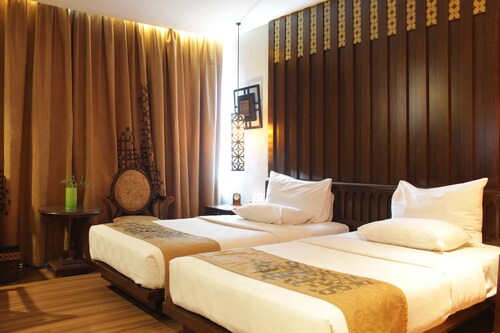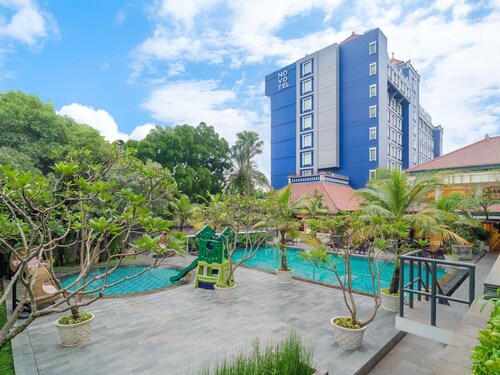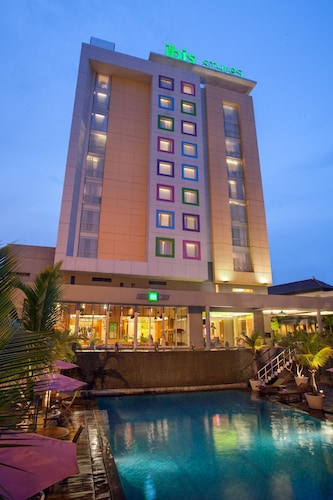Photo by Sharrie Shaw
Search Sports Hotels in Surakarta
- Change your mindBook hotels with free cancellation
- Be pickySearch almost a million properties worldwide
Check availability on Surakarta Sports Hotels
Top Surakarta Hotel Reviews

The Royal Surakarta Heritage - Handwritten Collection
6/10 Okay
Explore a world of travel with Expedia
Hotels near popular Surakarta Attractions
Hotels in Surakarta by Star Rating
Explore more hotels
- Swiss-Belinn Saripetojo Solo
- Diamond Hotel Solo
- Red Chilies Hotel
- Comfort Centre Residence Solo
- Front One Budget Hotel Slamet Riyadi Solo
- Collection O Solo near Universitas Muhammadiyah Surakarta formerly Kedaton Home
- Zest Parang Raja Solo by Swiss-Belhotel International
- Aston Solo
- ZG Homestay Solo
- HARRIS Hotel & Conventions Solo
- Nata Azana Hotel Solo
- GRAND ORCHID HOTEL SOLO
- Loji Hotel Solo by Wstay
- favehotel Manahan - Solo
- Hotel O Gurita
- Hotel Asia
![At the museum no photos are allowed which is really unfortunate as it was well worth the visit and the guided tour is definitely not to be missed. In the museum there are even Batik made from the Dutch era which depicts stories like Little Red Riding Hood and Snow White!
I enjoyed the tour v much and at the end of the tour we were brought to this room where the artisan were working on hand drawn batik.
Below is an excerpt from Wikipedia for anyone interested in learning more about the process of batik making.
Firstly, a cloth is washed, soaked and beaten with a large mallet. Patterns are drawn with pencil and later redrawn using hot wax, usually made from a mixture of paraffin or bees wax, sometimes mixed with plant resins, which functions as a dye-resist. The wax can be applied with a variety of tools. A pen-like instrument called a canting (IPA: [tʃantiŋ], sometimes spelled with old Dutch orthography tjanting) is the most common. A canting is made from a small copper reservoir with a spout on a wooden handle. The reservoir holds the resist which flows through the spout, creating dots and lines as it moves. For larger patterns, a stiff brush may be used. Alternatively, a copper block stamp called a cap (IPA: [tʃap]; old spelling tjap) is used to cover large areas more efficiently.
After the cloth is dry, the resist is removed by scraping or boiling the cloth. The areas treated with resist keep their original color; when the resist is removed the contrast between the dyed and undyed areas forms the pattern. This process is repeated as many times as the number of colors desired.
The most traditional type of batik, called batik tulis (written batik), is drawn using only the canting. The cloth need to be drawn on both sides and dipped in a dye bath three to four times. The whole process may take up to a year; it yields considerably finer patterns than stamped batik.
Source: Wikipedia](https://images.trvl-media.com/place/6224808/26fd1460-c65a-4c1a-9444-7a893e883ac9.jpg?impolicy=fcrop&w=1200&h=500&q=medium)

